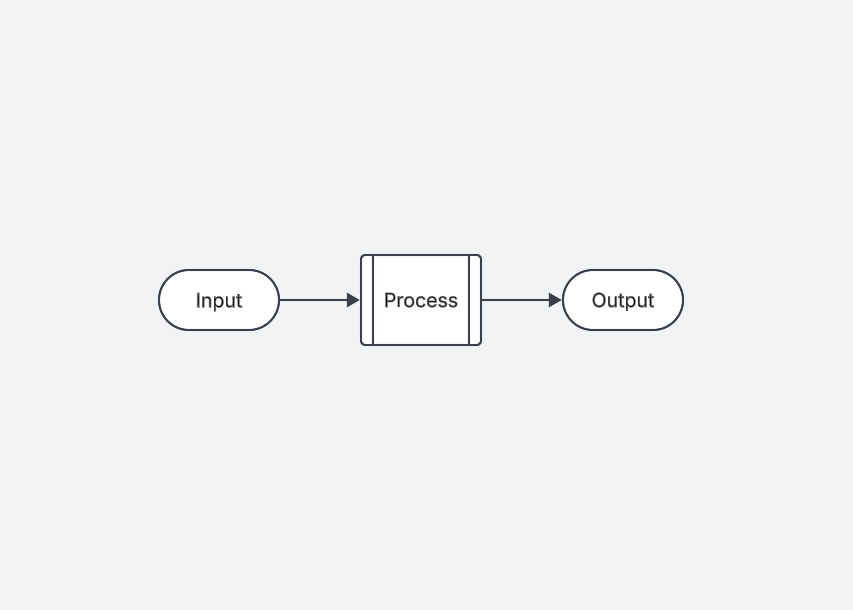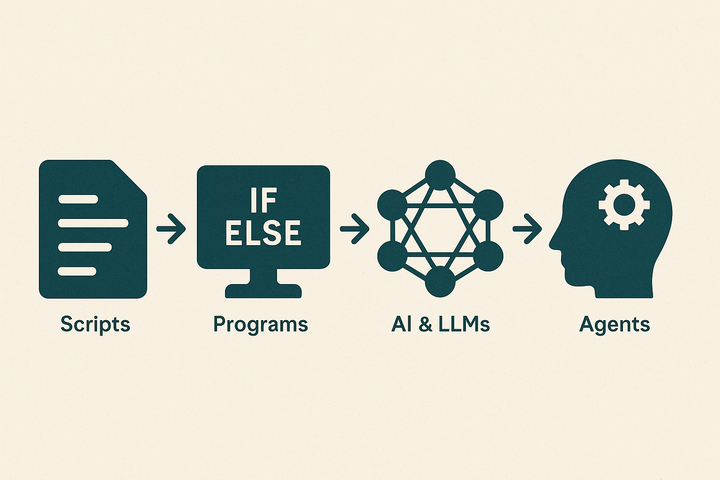Understanding the Input-Process-Output (IPO) Model: The Simplest Way to Think About Systems
The Input-Process-Output (IPO) Model simplifies how systems work by breaking them into input, process, and output. It’s an easy way to explain workflows, business processes, and software systems without technical jargon, making it perfect for stakeholder communication and process optimization.

Introduction
If you’ve ever tried explaining how a system works to a non-technical stakeholder, you’ve probably run into a common challenge: too much complexity. Most people don’t need (or want) to understand the intricate details of how software or business processes work. They just want a simple way to visualize the flow of information. Enter the Input-Process-Output (IPO) Model—the simplest and most effective way to communicate how systems function.
Audience
The IPO Model is valuable for a wide range of professionals, including:
- Business Stakeholders & Executives – Leaders who need to understand system workflows without technical jargon.
- Product Managers & Project Managers – Professionals who bridge technical and non-technical teams.
- Non-Technical Clients & End-Users – Customers or partners who interact with technology but don’t need deep technical knowledge.
- Business Analysts & Consultants – Experts optimizing business processes and mapping out workflows.
- Software Engineers & Developers – Developers who need a simple way to explain system flows to stakeholders.
- Educators & Trainers – Instructors teaching business systems, software development, or process management.
What is the IPO Model?
At its core, the Input-Process-Output (IPO) Model breaks down any system into three fundamental components:
- Input: What goes into the system (e.g., data, user requests, raw materials).
- Process: What happens to that input (e.g., calculations, transformations, business logic).
- Output: What comes out of the system (e.g., reports, processed data, finished products).
This model applies to everything from a simple calculator to a complex business workflow. It provides a straightforward way to illustrate cause and effect without overwhelming people with unnecessary details.
Why Stakeholders Love the IPO Model
When dealing with stakeholders—whether executives, clients, or team members from non-technical backgrounds—simplicity is key. The IPO model helps because:
- It eliminates jargon – No need to dive into databases, algorithms, or APIs.
- It keeps the conversation focused – Instead of getting lost in technical details, discussions can stay centered on the inputs, processes, and expected outcomes.
- It applies to every system – Whether explaining an order management system, a customer support workflow, or a machine learning algorithm, this model works universally.
Real-World Examples
To illustrate how the IPO model applies across different industries, here are a few examples:
1. E-Commerce Order Processing
- Input: Customer places an order online.
- Process: The system verifies payment, checks inventory, and initiates shipping.
- Output: Order confirmation is sent to the customer, and the package is shipped.
2. Customer Support Ticketing System
- Input: A customer submits a support request.
- Process: The system categorizes and assigns the ticket to an agent.
- Output: The agent responds to the customer, resolving the issue.
3. Weather Forecasting Application
- Input: Sensors collect temperature, humidity, and wind data.
- Process: Algorithms analyze the data to predict future weather patterns.
- Output: A weather forecast is displayed to users.
Expanding the Model for Technical Audiences
While the basic IPO model is great for high-level discussions, technical teams can expand it by adding details such as:
- Feedback Loops: What happens if the output needs adjustments?
- Multiple Processes: What happens when different components interact?
- Data Flow Diagrams: How does data move between systems?
Conclusion
The Input-Process-Output (IPO) Model is the ultimate simplifier. It provides an easy-to-understand framework for explaining how systems work without overwhelming stakeholders. Whether you’re presenting a new software solution, optimizing a business process, or educating clients, this model ensures everyone stays on the same page.
Next time you need to break down a complex idea, start with IPO. It’s simple, effective, and universally understood.
Need help simplifying your business or software processes? Reach out to us at Polaris Pixels to make complex technology easy to understand and implement.



Comments ()